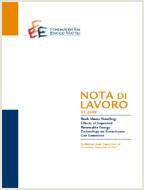The Role of Standards in Eco-innovation: Lessons for Policymakers

06.09.2013
Herman R.J. Vollebergh, Edwin van der Werf
Q38, Q55, Q58
Standards, Technological Change, Eco-innovation, Environmental Policy Instruments
Climate Change and Sustainable Development
Carlo Carraro
This paper aims to help policy makers identify how standards can contribute to the effective and cost-efficient development and deployment of eco-innovations (innovations that result in a reduction of environmental impact). To that end we discuss what standards are, how the process of standardization works, and how standards are related to induced innovation and diffusion in different type of markets, e.g. markets for add-on technologies versus markets for integrated resource- or emission-saving technologies. This broad perspective enables us to identify interesting economic dimensions of standards, such as their contribution to positive network externalities, and the extent to which they are substitutes or complements to environmental policy instruments. Finally we discuss how governments might contribute to eco-innovation by selecting, stimulating or creating (inter)national standards.
***
Suggested citation: Vollebergh, H.R.J., E. van der Werf (2013), ‘The Role of Standards in Eco-innovation: Lessons for Policymakers’, Nota di Lavoro 74.2013, Milan, Italy: Fondazione Eni Enrico Mattei.
